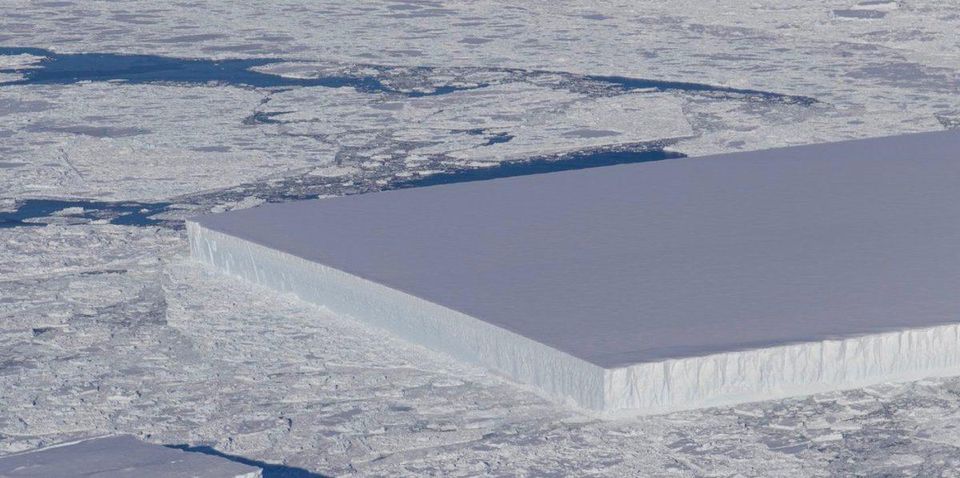NASA image of a tabular iceberg from the Larsen C Ice Shelf. NASA
We had never heard of this nor seen a picture like this before, so we thought we’d share the following with you…
NASA recently shared the photo above of a nearly perfect rectangular iceberg in Antarctica that they took as part of “Operation IceBridge, a mission to image Earth’s polar regions in order to understand how ice (thickness, location, accumulation, etc.) has been changing in recent years.” 1 The “monolithic slab of ice” was found floating near the Larsen C ice shelf.
However, while the iceberg might seem totally unnatural and manufactured (cut) to look that way, it is actually a natural phenomenon.
Called a tabular iceberg, they have steep, nearly vertical sides, a flat plateau top and typically break off of ice shelves (which are tabular bodies of thick ice).
Ice shelves form where the land meets the ocean. “As ice flow from the continental land mass down to the ocean, it eventually spills out over the ocean, in some places floating and in other places partially supported by the ocean floor. The ice that sits over the ocean but is attached to the land is an ice shelf. “2
Hope you enjoyed this little piece of Thursday afternoon science!












